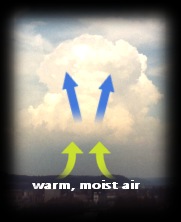
An event as powerful as lightning needs something even more powerful to generate it- the thunderstorm.
It all begins when the atmosphere becomes unstable. In the summertime, the sun's energy heats the earth's surface, which in turn heats the atmosphere close to the ground. This warmer air close to the ground is buoyant relative to the air above it. If this instability becomes great enough, columns of warm air may begin to rapidly burst upward through the atmosphere in a process called convection. As the massive volumes of air rise, they condense in the cooler surrounding air. If there is sufficient moisture in the air, this process creates the enormous, towering cumulonimbus clouds (see diagram at above right), and a thunderstorm is born. An approaching cold front can also force warm, moist air at the surface upward, initiating thunderstorm development.
There are several theories on the mechanism of lightning generation within a thunderstorm. At the base of the storm, rising water vapor condenses into raindrops. The strong updraft carries water droplets into the subfreezing air high in the atmosphere, where ice crystals form and some of the lofted droplets freeze. Small clumps of ice called graupel form. Some grow into hailstones. The graupel and hail tend to fall back toward earth, while the raindrops rise past it. Many of these raindrops, graupel and hailstones collide with each other. Electrification of a storm is thought to be the result of one or all of these processes. Through these processes, the thunderstorm eventually develops multiple regions of positive and negative charge.
When the insulating air between the regions of opposite charge can no longer hold the two apart, a lightning flash begins to develop.
Air is not a good electrical conductor. But when it is subjected to a critical level of voltage, electrical breakdown of the air occurs. This 'broken-down' air can conduct electricity easily, and propagates in a chain-reaction fashion in channels called leaders.
The vast majority of lightning flashes begin inside the cloud in between two of the opposing charge regions. The electrical breakdown begins at a single point, growing in both directions as a branching bidirectional leader network: one end positive, the other negative (see rendering in Fig. 1 below). All cloud-to-ground lightning strikes start as one of these bidirectional leaders, with the negative end typically the one that moves toward the ground.
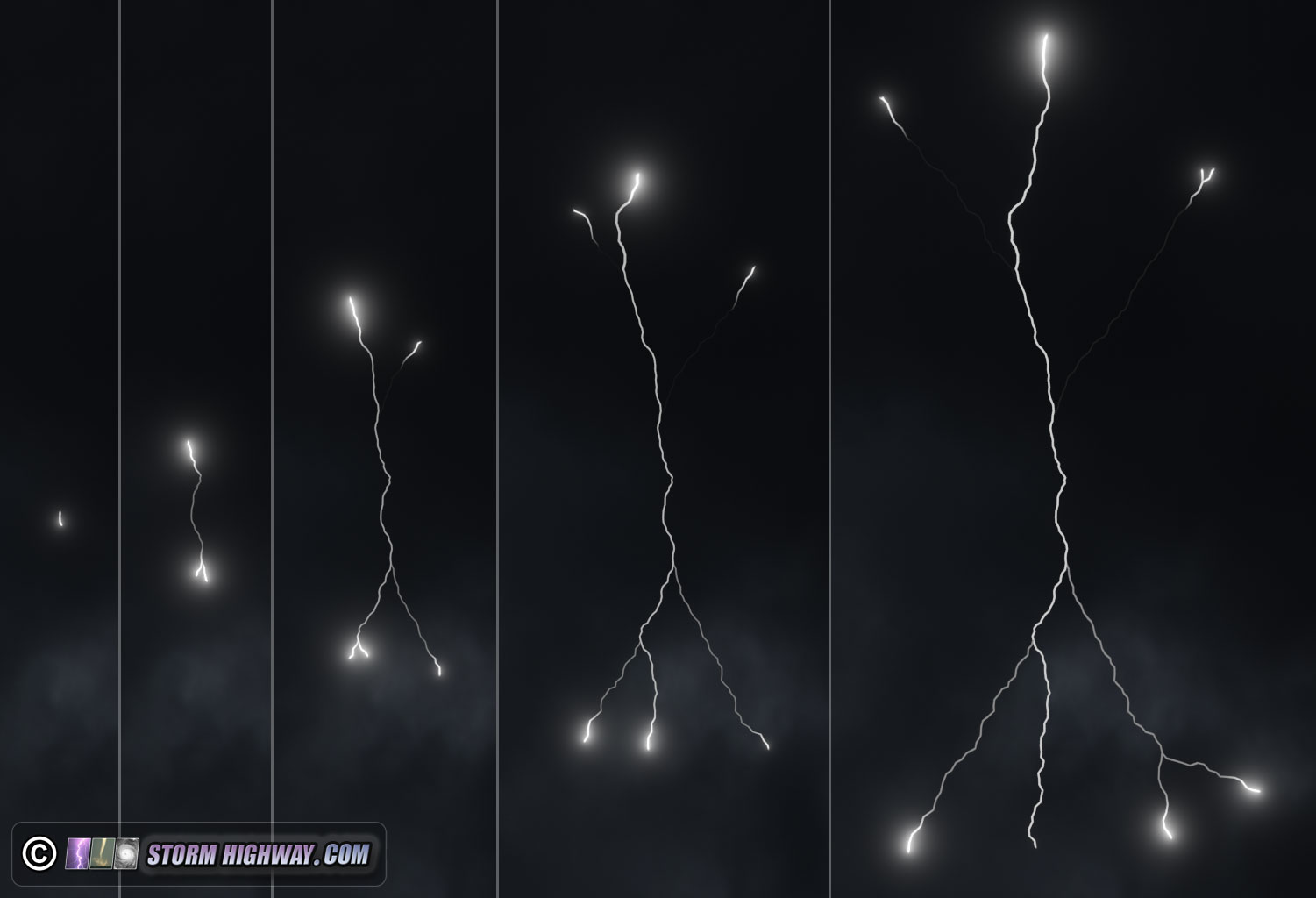
Fig. 1: A rendering of a lightning discharge as it starts and grows inside of a cloud. The bidirectional leader grows in opposite directions into regions of opposing charge. Here, the negative leaders are growing downward and the positive leaders upward.
The air breaks down in narrow paths called leaders that split apart and branch out as the 'chain reaction' moves, in steps, toward the ground (watch first animation above). Picture the 'paths' as sticks being laid end-to-end, and every moment, adding another stick to make the path longer. These downward-moving paths of broken-down air are collectively called the stepped leader because of its incremental motion.
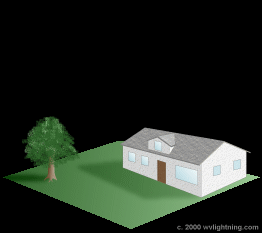
This animation depicts the stepped leader descending
to meet the upward leaders extending from the ground, and the first and subsequent return strokes. This is an extremely slow-motion animation- the actual process takes only a small
fraction of a second.
The stepped leader is dimly illuminated, but is not visible to the human eye because of its speed and closeness in time (a small fraction of a second) to the bright return stroke. However, high-speed video camera shots of cloud-to-ground lightning strikes clearly shows the progression of this stepped leader as it descends and connects to the ground. The following is a frame-by-frame sequence from 1,500 frames per second video of a cloud-to-ground lightning strike:
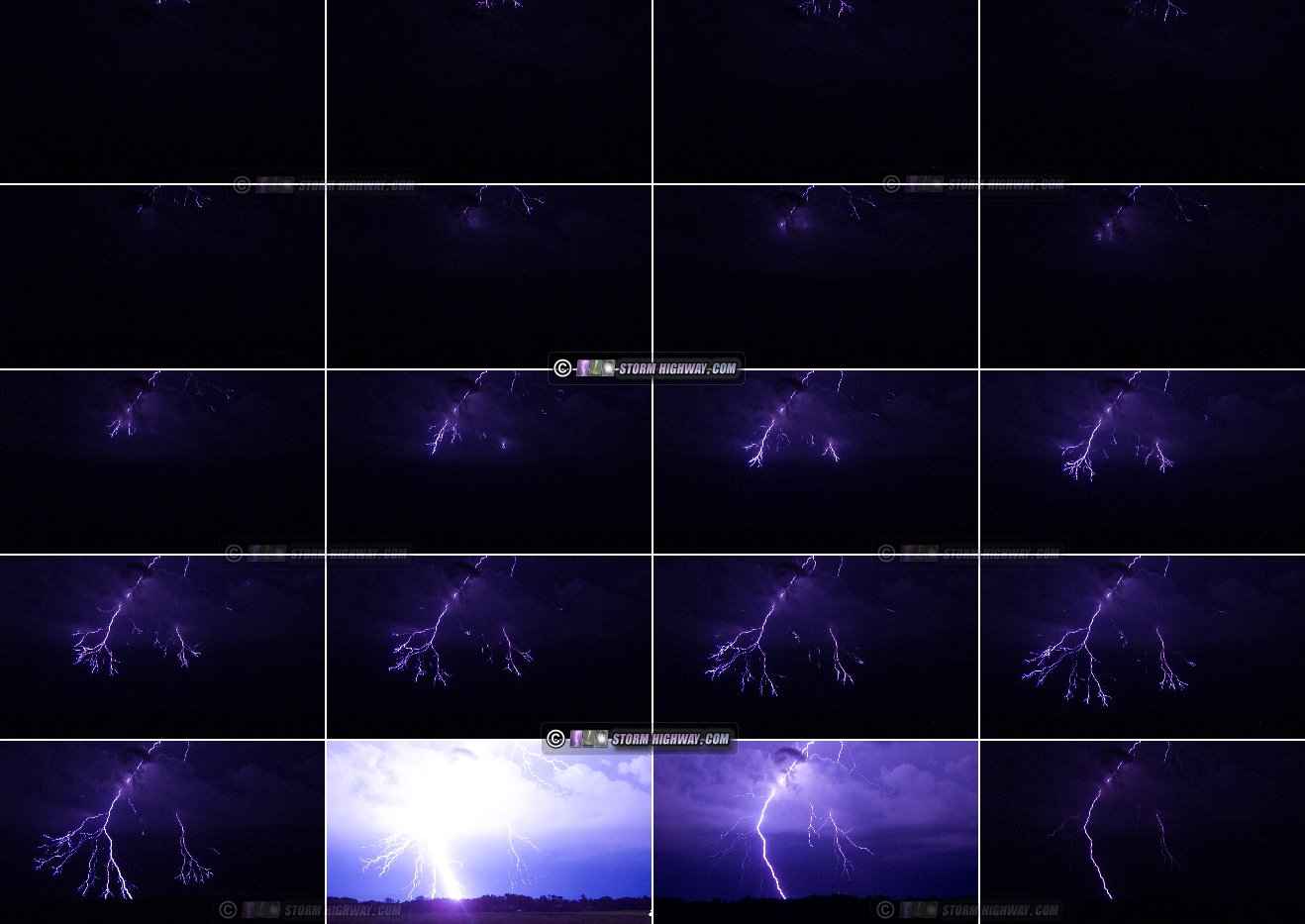
Fig. 2: From high-speed video of a cloud-to-ground strike near Trenton, Illinois: The stepped leader descends, followed by the bright return stroke in the last 3 frames.
When the stepped leader nears the ground (around 300 feet), one or more leaders are initiated from the ground (or objects on the ground), and move upward to meet the descending stepped leader (watch animation above). The photo below shows one of these small leaders reaching upward just to the right of the main lightning channel:
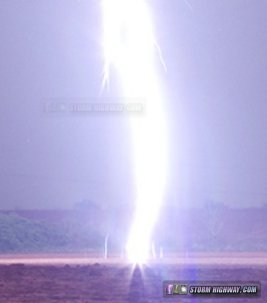
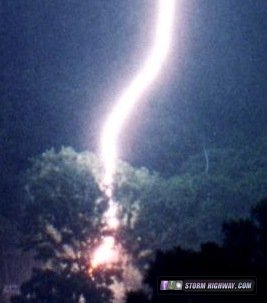
Upward leaders from the ground near cloud-to-ground lightning strokes. Click each image to view a bigger version.
The first of these three video frames shows a stepped leader in its final approach to the ground. The resulting return strokes follow. Click to view a slow-motion movie of this flash:

The video frames below also show a cloud-to-ground strike's stepped leader (frame 1) just prior to its ground connection (frame 2) followed by one of many return strokes (frame 3):
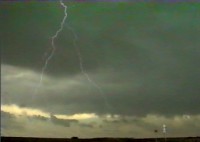
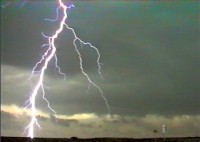
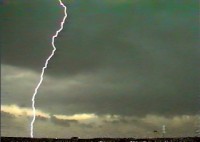
| Johnny Autery of Dixons Mills, Alabama caught the famous photograph of lightning striking a tree at close range that shows two upward leaders extending from the ground. View this amazing photo at his web site. |
By the time the
stepped leader gets that close to the ground, it has many
branches, so there is sort of a 'race', if you will, for which
branch will reach the ground first. Whichever downward-moving
branch touches an upward-moving
leader
first, 'wins', completing a path of conductive 'broken down' air that connects the ground and the cloud- like a big,
long wire. When this connection is made, the opposing charges equalize
themselves rapidly by flowing
upward through this 'wire' at close to the speed of light.
Even though the channel of 'broken-down' air is a better conductor than air, it is overloaded by the intense current flowing through it. This giant 'short circuit' causes the main lightning channel and all of the 'branches' to light up
brilliantly and heat up violently, like a filament in a light bulb. This flow of current is called the first return stroke, and is the visible 'lightning' flash that we see.
THUNDER: This currrent flow heats the channel of air to a temperature greater than the surface
of the sun in a split second. Heated air expands, explosively expanding when heated to such a high temperature with such speed. This explosive expansion generates supersonic shock waves moving outward from the channel in all directions. After travelling several feet, the shock waves slow to sound waves, which arrive to our ears as thunder.